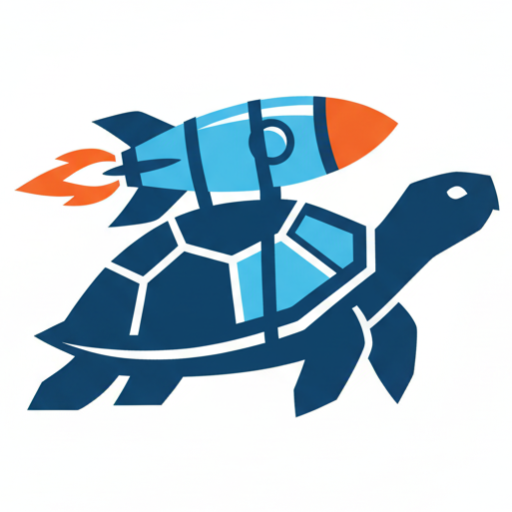
Introduction: The Guilt of Doing Nothing
Have you ever felt guilty for just sitting still, staring at the ceiling, or taking a long walk with no agenda? In today’s world, where being busy is worn like a badge of honor, doing nothing feels almost taboo. But what if the key to real productivity isn’t about working harder or longer—but learning the art of doing nothing strategically?
Most people believe productivity is about constantly taking action, but the truth is, some of the most effective people in history—scientists, CEOs, and top performers—have mastered the power of deliberate disengagement. In this article, we’ll break down why strategic rest is not just beneficial but essential for sustained productivity, clear thinking, and better decision-making.
The Science Behind Doing Nothing
1. Your Brain Needs Idle Time to Solve Problems
When you stop working, your brain doesn’t. Neuroscientists call this the Default Mode Network (DMN), the state your brain enters when you’re not focused on a specific task. This is when creative insights, problem-solving breakthroughs, and deep reflections happen. Ever noticed how your best ideas come in the shower or during a walk? That’s the DMN at work.
2. Boredom Fuels Creativity
A study from the University of Central Lancashire found that boredom actually enhances divergent thinking, which is the foundation of creativity. When your mind isn’t bombarded with distractions, it naturally starts connecting ideas in unexpected ways. This is why great thinkers like Einstein and Newton credited “thinking time” for their biggest discoveries.
3. Overworking Kills Efficiency
Pushing through exhaustion isn’t noble, it’s counterproductive. Research from Stanford University shows that productivity plummets after 50 hours per week. Beyond that, mistakes increase, creativity fades, and decision-making suffers. The smartest professionals understand that more hours ≠ better results.
Real-World Examples of Strategic Rest
- Albert Einstein: Known for taking long walks to clear his mind, allowing new ideas to form.
- Warren Buffett: Spends most of his day reading and thinking not constantly working.
- Bill Gates: Regularly takes “Think Weeks,” where he isolates himself to read, reflect, and strategize.
- Steve Jobs: Took barefoot walks to stimulate his creativity and decision-making.
These successful figures prove that stepping away from work often leads to the most impactful breakthroughs.
Doing Less but Thinking More: The Leadership Connection
As you move up the career ladder, your work shifts from execution to decision-making. You may find yourself doing less in terms of hands-on tasks, but the decisions you make become harder and more impactful. This is where strategic rest becomes even more critical:
- Mental Space for Better Decisions – Leaders don’t fill every moment with tasks; they leave space to think clearly.
- Less Action, More Strategy – At higher levels, your productivity is about choosing the right actions, not doing everything yourself.
- The Illusion of Busyness – Many managers and executives believe they need to be constantly busy, but the best leaders step back, assess, and make thoughtful decisions.
Steve Jobs wasn’t successful because he worked longer hours than anyone else, he was successful because he thought deeply before acting. The same applies to anyone in a leadership role, whether in business, tech, or any other industry.
How to Do Nothing, The Right Way
Strategic rest doesn’t mean mindlessly scrolling on your phone. Here’s how to do it effectively:
1. Schedule Mental Idling
- Take 5-10 minutes to stare at a blank wall (yes, really). Let your mind wander freely.
- Set aside time for “mindful boredom”, like a slow walk or just sitting without distractions.
2. Use Active Rest for Creativity
- Take a 30-minute walk without listening to anything. Let your brain process thoughts naturally.
- Try free writing—jot down thoughts with no pressure or structure.
3. Implement Think Blocks Like a CEO
- Block off time in your calendar for deep thinking, just like Bill Gates’ “Think Weeks.”
- Use the 80/20 rule—80% of high-impact results come from 20% of well-thought-out decisions.
Overcoming the Fear of Falling Behind
The biggest resistance to strategic rest is the fear of losing momentum. Here’s why that fear is wrong:
- Slowing Down = Speeding Up – Well-rested minds make faster and better decisions.
- Rest Prevents Burnout – If you never stop, your productivity will eventually collapse.
- Creativity Needs Space – Your best insights come when you’re not forcing them.
Instead of grinding non-stop, trust that intentional breaks will make you more productive in the long run.
Conclusion: The Art of Doing Nothing Is a Skill
Strategic rest isn’t laziness—it’s an advanced productivity tool. The most successful people don’t just work hard; they rest smart. So the next time you feel guilty for stepping away, remind yourself:
Doing nothing on purpose can be the most productive thing you do.
Now, challenge yourself: Try one of these strategic rest methods for a week and see how it transforms your focus, creativity, and decision-making.
Your best ideas might just come when you’re doing nothing at all.

